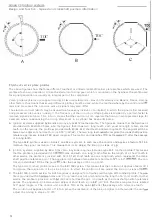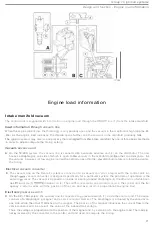
Group
28
Ignition
sys
t
ems
Des
ign and
fun
ction
Compensation functions
•
I
'
a
_1
·
-
_4
·
_7
0
REX-I
- -
I
•
••
•
••
•
•
-4
••
•
•••
Adaptive timing retardation
Background
/
funct
i
o
n
If normal
eng
i
ne load
is
exceeded
for
longer
than
usual
(
for
example
,
when the
car
is
dr
i
ven up a
long
i
ncl
i
ne
,
is
pull
-
ing a trailer
or
i
s running on
lo
w
-g
rade
fuel)
,
knock-controlled retardation
wi
ll
intervene more
often.
The
adaptive re-
tardat
ion
function
,
on the other hand
,
retards the
t
iming
by a small amount for a longer
per
io
d to
redu
ce
the r
isk
of
knock
at specific
combina
t
ions of engine speed and load
.
M
eaning
roughly
's
elf-learning',
th
e
term
'
adaptive
'
is
used to describe
the
fact
th
a
t the
con
tr
ol
af
t
er
a time,
'
tearn
s'
that
running
condi
t
io
ns
have
c
hanged
more or
les
s
permanently
,
The
fun
ctio
n
is applied
individu
ally
to
each
cylinder.
Condition
s
On
the
upper curve
(
green)
,
the upper posi
t
ion
on
the
vertical ax
i
s
represents
a
combina
tion
of
engine speed and
load
which
exper
i
ence has shown to
be particularly
susceptible
to knock
.
The hor
i
zon
t
al axis
i
s
the t
ime
scale
,
cal
i-
brated
in this case in
ten
s
of
minutes
.
If
t
he con
tr
o
l
unit detects that
t
he load/s
peed
increase
of
a
'p
ermanent
'
nature
(Le.
th
a
t
it
has lasted for
a specific
time
),
it
will
adop
t the
adaptive
retardat
io
n mode when kno
c
k
occurs
.
Act
i
v
a
t
i
o
n
Th
e lower
curve
illustrates the
pract
ical
effect
of
adaptive
retardation. Representing a per
i
od of approx
,
10
minutes
during
wh
ich
the
function
i
s activated
,
in
terval
lal is
termed the
'
active adaptive
If
the
control
detects
that the
speedlload
i
ncrease
is
of a permanent na
t
ure before
the
adaptive
is
reached
,
the bas
ic
timing
will
be
r
e
t
arded
by 1
°
,
The function is activated
in
the
even
t
of
knock
i
.
e
.
th
e basic
tim
ing is
retarded
as
indicated by
the start
o
f
interval (a) in
t
he
figure.
In this
c
a
se,
the tim
ing is
retarded by 4
°
(
to
o
r
1
°
mo
r
e
than under
'nor
ma
l'
kn
oc
k
following
whi
c
h
it
is
re
-
advanced in
the
usual
manner (a
t
a
rate which
varies
w
i
th engin
e speed)
t
o
1
°
below
'
t
he
basic
setting'
_'
0
).
37






























